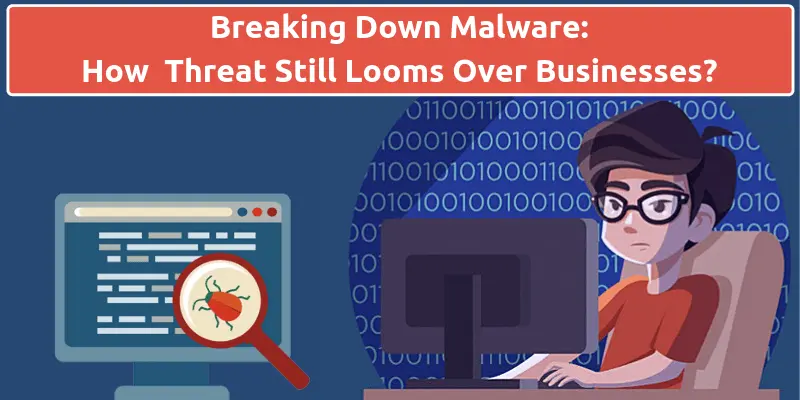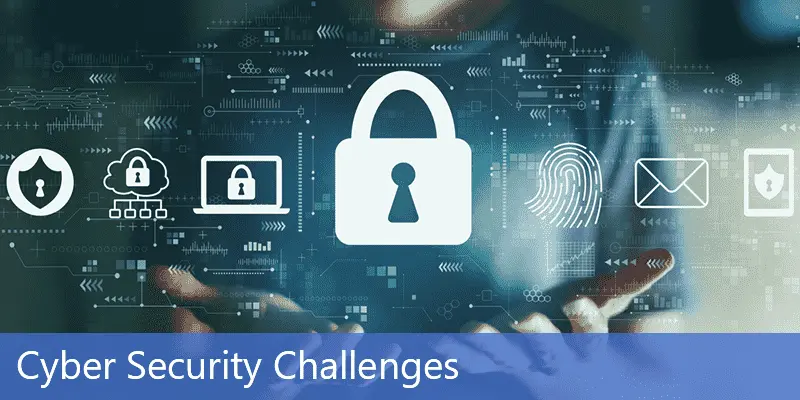
Breaking Down Malware: How The Threat Still Looms Over Businesses
The internet is an infinite and inexhaustible resource of information, entertainment, and so much more. It now seems impossible to imagine our lives without it or to go back to how things were before we started using smart technology. But all good things have a dark side, and cyber-crime continues to grow and affect business processes.
Ever since it originated, malware has been the largest threat faced by today’s businesses. According to a report on Data Breach Investigations by Verizon, the universe of malware is constantly evolving itself in countless ways so that it can penetrate our advanced systems and cause a lot of damage.
But the question remains – Why is malware, a long time threat, still giving us so much trouble?
Let us begin to understand.
Introducing Malware
In layman’s terms, malware is a file that is created by cyber-criminals with the intention of harming your system for leverage or compromise sensitive information. It may be a small piece of program that causes damage to the networking system by performing unauthorized actions on the user’s phone, tablet or computer.
You might know a few types of malware, here is a list:
1. Virus. Probably the most common type of infection. These are executable files that multiply themselves and alter programming code which affects the working of the system.
2. Worms. Replicating programs that increase in number and spread onto a network to other machines.
3. Spyware. As the name suggests, it downloads itself and acts as a spy on your system to steal sensitive data.
4. Ransomware. Malware that holds your machine or data captive until an amount of ransom is paid.
5. Rootkits. Programs that hide after installation and make modifications to the programming of the system.
While a variety of malware is already doing rounds, the latest trend is custom malware. These are advanced, single-use, highly targeted malware that is programmed to attack with precision and remain hidden for a longer period of time. According to the 2017 Threat Report by Cylance, more than 70 percent of malware that were blocked were one time threats.
Another emerging issue is cryptojacking where unprotected machines around the world are used as a resource to mine cryptocurrency by cybercriminals. This might not seem like much for a user, but for companies who use paid resources like the cloud, cryptomining can storm up a huge bill.
How Things Went Downhill
Times were simpler before, malware used to spread only via removable drives like floppy and discs. The internet has had an explosive growth since then, which has given an arena of new opportunities for cybercriminals to infiltrate a computer’s network.
As the internet reached people’s homes and businesses with everyone getting their own email address, malware spammed into our inboxes with attachments and links in hopes that an unsuspecting user would click on it. But things have changed a lot since then. Cybercriminals have upgraded their game with more elegant ways of delivering malware into our systems.
Malware, from being just a nuisance, became a serious threat, and still continues to be. Individuals fear that their personal information may be misused. Businesses face serious issues of finances and compromised data. Thus, taking measures to prevent malware infections from entering into our system is the solution.
Understanding the Situation
The first thing is to not underestimate the opponent. Malware developers are intelligent people who know how to manipulate technology to their benefit. So to counter their attack, one should always think one step ahead.
Traditional anti-malware applications depend on signature files to recognize threats. But if the malware is new, or hasn’t become well known over the internet, the application will not detect it as a threat. The new custom malware will go unnoticed as they are specifically made for single use only.
The findings of the Cylance Threat Report show the rapidly growing ransomware attacks in the year 2017. Healthcare industry suffered the most, followed by manufacturing, education, and then the others. Ransomware WannaCry and NotPetya made international headlines last year, which goes on to show the seriousness of the situation.
Working on the remedy
Malware prevention is a challenge, with each solution having a set of drawbacks. Blockchain technology and its benefits can be considered, but they are often overstated.
So what can we do? Let’s see.
One, you can avoid opening email attachments and links. Also, switch off any preview modes and scripting in the web browser. But this is very difficult to work with, and many websites will have issues with the display.
Two, you can blacklist and whitelist programs, and choose to run only approved programs. This is a humongous task, and it is quite possible that malware may conceal itself as a whitelist program.
Three, you can select from a wide range of anti-malware applications present in the market. But the issue again is that they run on signature threats, which is not feasible with the advanced malware that is custom or programmed to change appearances.
Is there a solution? Well, yes.
If a solution is not foolproof, does not mean we should dismiss it. Malware protection must be a top priority, but know that only an antivirus cannot fight it alone. Dealing with technology can be a tricky ride, there is always some new development. The best solution is to apply a variety of measures and protocols.
Effective management of your passwords, multi-factor authentication, usage of VPNs, platform encryption, along with an updated anti-malware application will surely safeguard your business data. Also, not forgetting to take regular backups on a protected cloud environment.
When a solo solution does not seem enough, it is wise to implement several options, as mentioned above, for the protection of your network against malware.
FAQ
How to 100% get rid of malware?
Completely removing malware requires a combination of scanning, cleaning, and securing your system. Follow these steps:
- Disconnect from the internet to stop further data theft or infection.
- Run a full system scan using a reputable antivirus or anti-malware tool (Malwarebytes, Bitdefender, Norton, etc.).
- Remove or quarantine all detected threats.
- Use a second opinion scanner to ensure nothing is missed.
- Uninstall suspicious programs manually.
- Reset your browser and delete malicious extensions.
- Update your OS, software, and security tools to patch vulnerabilities.
If the infection persists, perform a clean operating system reinstall for 100% guaranteed removal.
What are the 4 types of malware?
The four most commonly recognized types of malware are:
- Viruses: malicious code that attaches to files and spreads when opened.
- Worms: self-replicating threats that spread without user interaction.
- Trojans: disguised as legitimate software but deliver harmful payloads.
- Ransomware: locks or encrypts data and demands a ransom for access.
(Other types include spyware, adware, rootkits, bots, and keyloggers.)
What is the 7 step malware removal process?
A standard 7-step malware removal process includes:
- Identify the infection – symptoms, system behavior, and alerts.
- Isolate the infected device – disconnect from networks and Wi-Fi.
- Boot into Safe Mode – prevents malware from running at startup.
- Run antivirus and anti-malware scans – detect and remove threats.
- Manually remove suspicious files or programs – if needed.
- Update operating system and software – patch vulnerabilities.
- Restore and monitor the system – ensure stability and prevent reinfection.
How to permanently delete malware?
To permanently eliminate malware:
- Use a reputable anti-malware tool to scan and remove threats.
- Delete temporary files and suspicious programs.
- Reset browsers, remove unknown add-ons, and clear cache.
- Update all software to close security gaps.
- Enable real-time protection from your security suite.
For the highest level of certainty, perform a full system format and reinstall the operating system, which wipes all malware completely.






